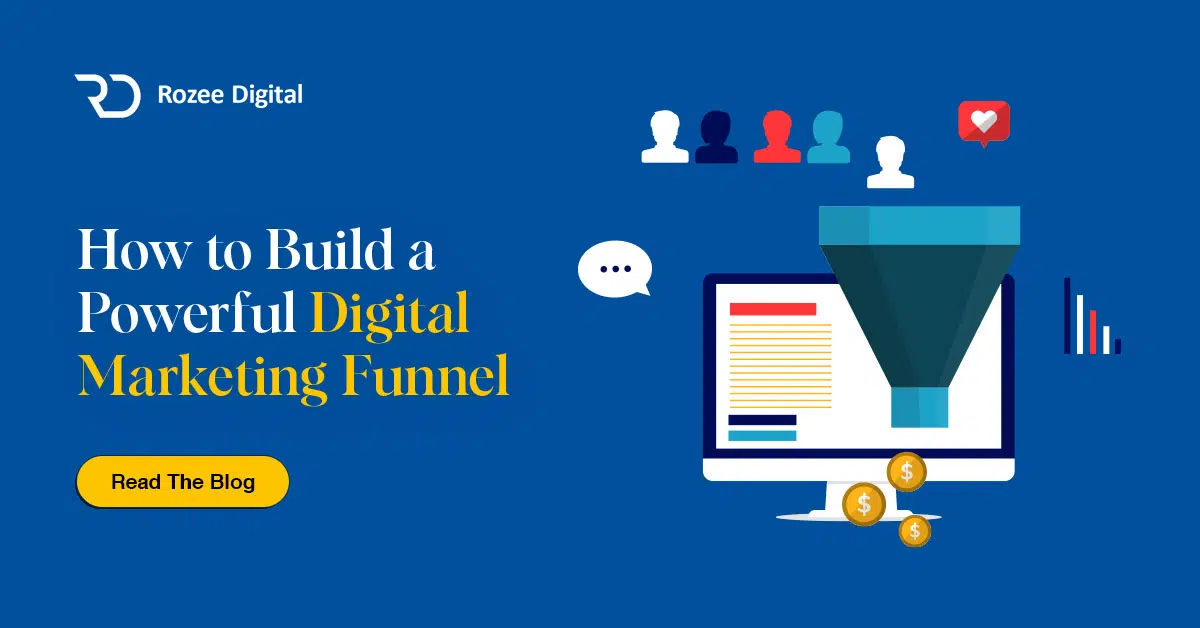The Importance of Conversion Rate Optimization
In the competitive landscape of ecommerce, conversion rate optimization (CRO) plays a crucial role in the success of online businesses. By understanding the concept of CRO and recognizing its significance for ecommerce brands, businesses can unlock the potential for higher conversions and increased revenue.
Understanding Conversion Rate Optimization
Conversion rate optimization is the process of improving the percentage of website visitors who take a desired action, such as making a purchase, signing up for a newsletter, or submitting a form. It involves analyzing user behavior, identifying areas of improvement, and implementing strategies to enhance the website’s performance and user experience.
The primary goal of CRO is to increase conversion rates by removing barriers and optimizing various elements on a website. By optimizing landing pages, product pages, checkout processes, and other key areas, businesses can guide users through the customer journey more effectively, resulting in a higher likelihood of conversions.
CRO involves a data-driven approach, leveraging analytics and user insights to make informed decisions. By analyzing metrics such as click-through rates, bounce rates, and conversion funnels, businesses can identify patterns and make data-backed adjustments to improve the overall conversion rate.
Why Conversion Rate Optimization Matters for Ecommerce Brands
For ecommerce brands, conversion rate optimization is of utmost importance. A higher conversion rate means more customers completing purchases, resulting in increased revenue and profitability. Here are a few reasons why CRO matters for ecommerce brands:
- Maximizing Return on Investment (ROI): By optimizing conversions, businesses can make the most of their existing traffic and marketing efforts. Instead of solely focusing on driving more traffic, CRO enables businesses to extract more value from their current visitor base, resulting in a higher ROI.
- Improving User Experience: CRO involves enhancing the user experience by identifying and addressing pain points and friction on the website. By providing a seamless and intuitive experience, businesses can build trust and credibility, which ultimately leads to higher conversion rates.
- Competitive Advantage: In the highly competitive ecommerce landscape, businesses that prioritize conversion rate optimization gain a competitive edge. By continuously improving their website’s performance, businesses can stand out from their competitors, attract more customers, and foster customer loyalty.
- Cost-Effectiveness: CRO can be a cost-effective strategy compared to acquiring new customers through advertising or marketing campaigns. By optimizing the conversion funnel and increasing the conversion rate, businesses can generate more revenue without significantly increasing their acquisition costs.
To effectively implement conversion rate optimization strategies, businesses can leverage various tools and techniques. These tools help in analyzing user behavior, conducting A/B testing, heatmapping, and user testing, among other capabilities. Exploring the key features and capabilities of conversion rate optimization tools is essential for businesses aiming to improve their conversion rates.
Introduction to Conversion Rate Optimization Tools
When it comes to conversion rate optimization, leveraging the power of conversion rate optimization tools can make a significant difference in achieving your desired results. These tools provide valuable insights and help identify areas of improvement to enhance your website’s conversion rates. In this section, we will explore what conversion rate optimization tools are and how they work.
What are Conversion Rate Optimization Tools?
Conversion rate optimization tools are software applications designed to help businesses analyze and optimize their conversion rates. These tools offer a range of features and functionalities that enable you to track user behavior, gather data, and make data-driven decisions to improve your website’s performance.
With conversion rate optimization tools, you can gain insights into various aspects of your website, such as user engagement, click-through rates, and conversion funnel analysis. These tools provide valuable metrics and data points that help you understand how visitors interact with your website and identify potential areas for improvement.
How Conversion Rate Optimization Tools Work
Conversion rate optimization tools work by collecting and analyzing data related to user behavior on your website. They use a variety of methods, such as A/B testing, heatmapping, and user testing, to gather insights and identify opportunities for optimization.
A/B testing tools allow you to create multiple versions of a webpage and test them simultaneously to determine which variant performs better in terms of conversion rates. By comparing different elements, such as headlines, call-to-action buttons, or layout variations, you can identify the most effective combination to improve conversions.
Heatmapping tools provide visual representations of user behavior on your website. They generate heatmaps that show where users click, scroll, or spend the most time on a page. This information helps you understand which areas of your website are most engaging and which might require improvements to enhance user experience and drive conversions.
User testing tools allow you to gather direct feedback from users through surveys or usability tests. This qualitative data provides insights into users’ thoughts, preferences, and pain points, helping you identify areas for improvement and prioritize optimization efforts.
By utilizing these conversion rate optimization tools, you can gain a deeper understanding of your website’s performance, identify areas for improvement, and implement data-driven strategies to increase your conversion rates. Remember, optimizing your website for conversions is an ongoing process, and these tools can play a crucial role in achieving your goals.
In the next section, we will explore the key features and capabilities of different conversion rate optimization tools, including A/B testing tools, heatmapping tools, and user testing tools. Stay tuned to learn more about these powerful tools that can help you enhance your website’s performance and increase conversions.
Key Features and Capabilities of Conversion Rate Optimization Tools
To effectively optimize your conversion rates, it is essential to leverage the power of conversion rate optimization (CRO) tools. These tools provide valuable insights and features that can help you analyze, test, and optimize your website to drive better conversions. Some key types of CRO tools include A/B testing tools, heatmapping tools, and user testing tools.
A/B Testing Tools
A/B testing tools are a fundamental component of any conversion rate optimization strategy. These tools allow you to compare two or more variations of a webpage or element to determine which one performs better in terms of conversions. By randomly splitting your website traffic between the different variations, you can gather data on user behavior, engagement, and conversion rates.
A/B testing tools provide statistical analysis to help you draw reliable conclusions from your experiments. They allow you to set up different variations of your web pages, test elements such as headlines, images, call-to-action buttons, and forms to identify the most effective version. This data-driven approach enables you to make informed decisions on optimizing your website and landing pages. For more information on landing page optimization, check out our article on landing page optimization.
Heatmapping Tools
Heatmapping tools are another valuable asset in the conversion rate optimization toolbox. These tools provide visual representations of user behavior on your website by using color-coded heatmaps. Heatmaps display where users click, scroll, and spend the most time on your web pages. This data helps you identify areas of high engagement and areas that receive less attention.
With heatmapping tools, you can analyze user interactions and make data-driven decisions to improve your website’s design and layout. By understanding how users navigate and engage with your site, you can optimize your page elements, such as the placement of key elements or the visibility of important information. Heatmaps can also reveal potential pain points and areas of confusion, allowing you to make targeted improvements. For more information on increasing conversion rates, visit our article on increase conversion rates.
User Testing Tools
User testing tools play a crucial role in understanding user behavior and preferences. These tools allow you to gather feedback directly from users through surveys, questionnaires, or usability testing. User testing tools help you identify potential barriers or frustrations that users may encounter on your website.
By conducting user tests, you can gain insights into how users interact with your site, uncover usability issues, and receive feedback on their experience. This information can guide you in making improvements that enhance user satisfaction and increase conversions. User testing tools can also provide valuable data for optimizing your website’s navigation, design, and overall user experience. For more information on website conversion optimization, check out our article on website conversion optimization.
By utilizing A/B testing tools, heatmapping tools, and user testing tools, you can gather valuable data and insights to optimize your website and improve your conversion rates. Each tool offers unique features and capabilities to help you identify areas for improvement and implement effective conversion rate optimization strategies. Remember to consider factors such as your budget and resources when choosing the right CRO tools for your business. For more information on conversion rate optimization services and strategies, visit our article on conversion rate optimization services.
Popular Conversion Rate Optimization Tools in the Market
When it comes to conversion rate optimization, there are several powerful tools available in the market to help ecommerce brands boost their conversions. These tools offer a range of features and capabilities designed to optimize various aspects of the user experience and improve conversion rates. Let’s explore three popular conversion rate optimization tools:
Tool 1
Tool 1 is a comprehensive A/B testing platform that allows ecommerce brands to experiment with different variations of their website or landing pages. By creating multiple versions and splitting traffic between them, brands can gather data and analyze which design or copy elements lead to higher conversion rates. This tool provides statistical insights, allowing brands to make data-driven decisions and optimize their website for better conversion rates.
Tool 2
Tool 2 is a heatmapping tool that provides visual representations of user behavior on webpages. By generating heatmaps, this tool helps ecommerce brands understand how visitors interact with their website, which areas receive the most attention, and which parts of the page are being ignored. Heatmaps can reveal valuable insights, such as the effectiveness of call-to-action buttons, the visibility of important content, and any potential user experience issues.
Tool 3
Tool 3 is a user testing platform that allows ecommerce brands to gain direct feedback from real users. This tool enables brands to create specific tasks or scenarios for users to complete while recording their screen and vocal feedback. User testing provides valuable insights into user behavior, preferences, and pain points. By understanding how users navigate and interact with their website, brands can identify areas for improvement and implement changes to enhance the user experience.
These popular conversion rate optimization tools offer ecommerce brands valuable insights and capabilities to optimize their websites and increase conversion rates. It’s important to note that these tools are just a few examples, and there are many other tools available in the market with their unique features and benefits. When selecting the right conversion rate optimization tools for your business, consider factors such as your specific goals, budget, and resources. For more information on conversion rate optimization strategies, check out our article on conversion rate optimization strategies.
By leveraging the power of these tools, ecommerce brands can make data-driven decisions, improve user experience, and ultimately increase their conversions. Remember, conversion rate optimization is an ongoing process, and continuous testing and optimization are key to achieving long-term success.
Choosing the Right Conversion Rate Optimization Tools for Your Business
When it comes to choosing the right conversion rate optimization tools for your business, there are several factors to consider. Each tool has its own unique features and capabilities, so it’s important to evaluate your specific needs and resources before making a decision.
Factors to Consider
Before selecting a conversion rate optimization tool, it’s essential to assess the following factors:
- Goals and Objectives: Define your conversion rate optimization goals and the specific metrics you want to improve. Different tools may excel in different areas, such as landing page optimization or increasing overall conversion rates. Aligning the tool’s capabilities with your goals will help you make an informed decision.
- Technical Expertise: Consider the technical expertise required to implement and utilize the tool effectively. Some tools may require advanced coding skills or integration with your existing systems. Evaluate whether you have the necessary resources or if you need to involve a conversion rate optimization agency or consultant for assistance.
- Budget and Resources: Evaluate your budget and resources available for investing in conversion rate optimization tools. Some tools may come with a higher price tag due to advanced features or extensive support. Determine the level of investment you are willing to make and consider the potential return on investment.
- Integration and Compatibility: Ensure that the selected tool is compatible with your existing technology stack and can integrate seamlessly with your website or e-commerce platform. This will allow for smoother implementation and data synchronization.
- Customer Support and Training: Assess the level of customer support and training provided by the tool’s provider. Look for resources such as documentation, tutorials, and responsive customer support to ensure you can maximize the tool’s potential.
Evaluating Your Budget and Resources
When evaluating your budget and resources, consider not only the initial cost of the tool but also any ongoing fees or maintenance requirements. Some tools may offer tiered pricing plans based on the level of features and support required. It’s important to strike a balance between your budget and the features necessary to achieve your conversion rate optimization goals.
Additionally, consider the resources needed to implement and manage the tool effectively. This includes the time required for setup, data analysis, and ongoing testing. If you have limited resources, it may be beneficial to opt for a tool that offers comprehensive support or even consider outsourcing to a conversion rate optimization consultant.
By carefully considering the factors mentioned above, you can make an informed decision about which conversion rate optimization tools are the best fit for your business. Remember, the goal is to choose a tool that aligns with your goals, technical capabilities, budget, and resources. With the right tools in place, you can implement effective conversion rate optimization strategies and drive higher conversions on your website or e-commerce platform.
Implementing Conversion Rate Optimization Strategies
To effectively boost conversions, it’s essential to implement conversion rate optimization strategies. This involves a combination of setting goals and metrics, analyzing and interpreting data, and continuous testing and optimization.
Setting Goals and Metrics
The first step in implementing conversion rate optimization (CRO) strategies is to set clear goals and metrics. Determine what actions you want your website visitors to take, such as making a purchase, filling out a form, or subscribing to a newsletter. These actions are known as conversions, and they serve as the foundation for measuring the success of your CRO efforts.
Establish specific, measurable, achievable, relevant, and time-bound (SMART) goals for your conversions. Examples include increasing the conversion rate by a certain percentage within a given timeframe or achieving a specific number of conversions per month. By setting clear goals, you can focus your optimization efforts and track your progress effectively.
Analyzing and Interpreting Data
Data analysis plays a crucial role in conversion rate optimization. By closely examining user behavior, you can identify areas of your website that may be causing friction or hindering conversions. Analyze data from tools such as Google Analytics or other website analytics platforms to gain insights into user interactions, bounce rates, and conversion funnels.
Heatmapping tools provide visual representations of user behavior, showing where visitors click, scroll, or spend the most time on your website. This information can help identify areas that require improvement or areas where visitors might be getting confused or disengaged. Check out our article on website conversion optimization for more information on optimizing your website for conversions.
Continuous Testing and Optimization
Conversion rate optimization is an ongoing process that requires continuous testing and optimization. A/B testing, also known as split testing, is a common technique used to compare different variations of a webpage or element to determine which one performs better in terms of conversions. By testing different headlines, call-to-action buttons, layouts, or even entire landing pages, you can uncover valuable insights about what resonates with your target audience.
Regularly analyze the results of your A/B tests and make data-driven decisions to optimize your website and improve conversions. Implementing changes based on test results and continuously iterating on your website’s design and content can lead to significant improvements in conversion rates over time.
Remember, conversion rate optimization is an iterative process, and what works for one website may not work for another. It’s important to tailor your strategies to the unique characteristics of your target audience and business goals.
By setting clear goals, analyzing data, and continuously testing and optimizing your website, you can unleash the power of conversion rate optimization and drive more conversions for your ecommerce brand.







